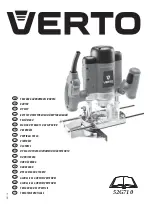INSTALLING AND USING THE ROUTER
Installing and Using the Router
Installing the Router
1.
To use the router’s cellular features, connect a suitable antenna to the antenna connector.
2.
If your device is capable of supporting antenna diversity, see the section about diversity.
3.
Some routers support Wi-Fi. To use the router’s Wi-Fi access point features, install a suitable antenna to
the Wi-Fi antenna connector on the router.
The Wi-Fi antenna connection is reverse polarity. If you use a standard antenna on the Wi-Fi connector,
you can damage the antenna and the connector.
Five Wi-Fi devices can concurrently use your Wi-Fi access point.
4.
Using an Ethernet cable, connect one end of the cable to the ETHERNET connector on the back of the
router and the other end to your computer, either directly or through a switch or hub.
5.
If you are connecting to a serial interface, connect the DE9 connector (9-pin) of the RS232 cable to the
RS232 connector on the router, then connect the other end to the serial port on the desired device.
6.
Some routers support the use of a GPS receiver. If you are using a GPS receiver with the router, attach
the GPS cable to the GPS connector on the router.
7.
Attach a power cable to your power supply module.
8.
Screw-on the power lead from the power supply module into the power connection on the router.
9.
Plug the power supply into your power source.
The POWER LED lights after the device powers up.
When the Status LED begins to blink, the device is ready for use.
10.
You can configure your router by using your router’s web management Interface. You might need to
change the IP address of your computer to be in the same IP and subnet mask range as the device.
a.
Open an Internet browser. In the browser's address field, type the default address for the
router: http://192.168.2.1.
b.
A login page opens. In the
usernam
e field, type the default user name: admin (all lower-
case).
c.
In the
password
field, type the default password: admin (all lower-case).
d.
Click
Login
. The Web Management Home page opens. Online documentation included
with the web management interface describes how to configure your router
Using Diversity
Some devices support antenna diversity. Antenna diversity uses two receive antennas to improve the downlink
connection (cell tower to mobile). It has no effect on the uplink (mobile to cell tower). Antenna diversity is useful
in environments where the signal arrives at the device after bouncing off or around buildings or other objects.
When antenna diversity is on and a like or similar antenna is installed on both radio connectors, the radio
automatically chooses the antenna with the best reception. To use this feature:
.
1.
Connect both antennas to your device, using both antenna connectors.
2.
Use the device's web interface to enable the diversity feature. See the help file for details.
20
MultiConnect
®
rCell 100 MTR-H5 User Guide


















